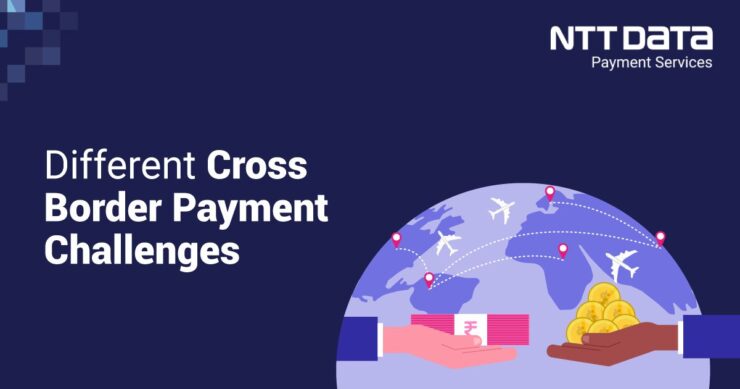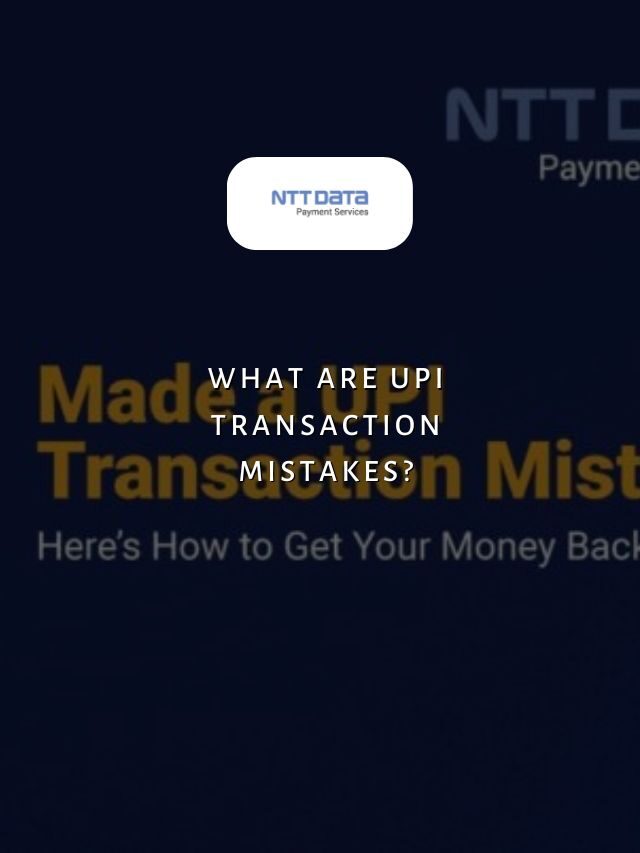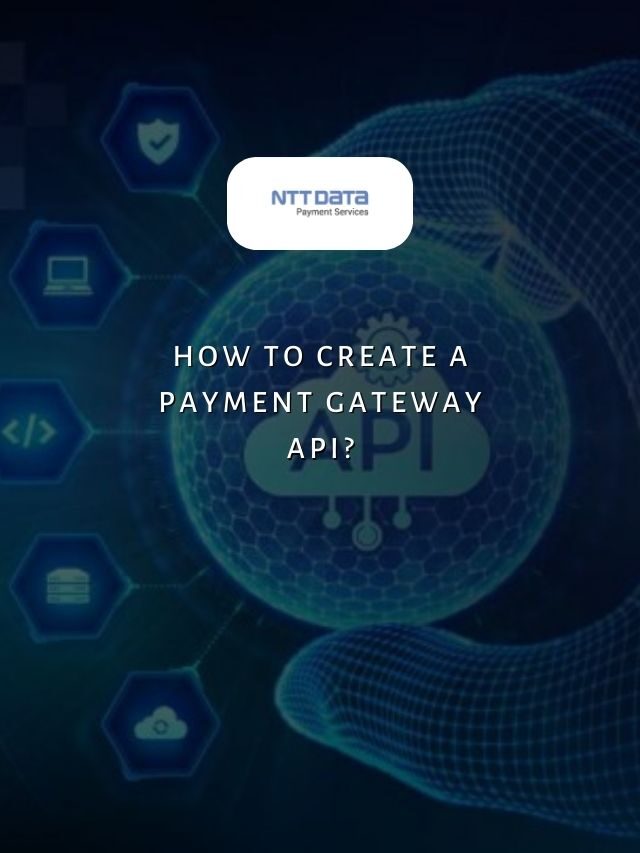
Table of Contents
- 1 What is Cross-Border Payment?
- 2 Recent Web Stories
- 3 How Does Cross-border Payment Work?
- 4 How do Banks Process Cross-Border Payments?
- 5 Cross-Border Payment Challenges
- 6 Overcoming Cross-Border Payment Challenges
- 7 Access the Best Payment Gateway with NTT DATA Payment Services
- 8 Expand Your Business Across Borders
Cross-border payments are significant for both B2C and B2B companies that do business internationally. Therefore, an ordinary international consumer purchase of an item is considered a cross-border payment.
Despite its significance, it has its fair share of challenges, such as compliance issues, liquidity management, operational systems, data protection, etc. Let’s understand more about cross-border payment.
What is Cross-Border Payment?
A cross-border payment is also known as an international transaction. Cross-border payments are financial transactions where the payer and recipient are located in different countries. These transactions involve the transfer of funds or assets across international borders, typically facilitated by banks, financial institutions, or specialised cross-border payment platforms.
Recent Web Stories
How Does Cross-border Payment Work?
The workings of cross-border payments are discussed in detail in the following steps.
1. Purchase: Initiating the Transaction
The cross-border payment process begins when a customer or business initiates a transaction by entering their payment details, such as banking information or credit card data. This sensitive data is then encrypted and securely transmitted to the relevant parties, including the issuing bank, for authorisation.
2. Routing and Processing: Streamline the Payment Pathways
Once the payment data is transmitted, it follows a complex route, traversing various financial institutions and networks. This involves the,
- Issuing bank
- Acquiring bank
And a series of correspondent banks that facilitate the cross-border transfer of funds. Each entity plays a crucial role in verifying the transaction and ensuring the necessary funds are available.
3. Payment Verification: Ensuring Optimal Funds
The payment is then subjected to a rigorous verification process by the receiving or acquiring bank. This step involves evaluating multiple parameters to either decline or approve the transaction.
A crucial aspect of this stage is ensuring that the payer has sufficient funds to complete the cross-border payment.
4. Successful or Declined Transactions
If the transaction is declined, the customer is notified, and the funds are not debited from their account. However, if the transaction is approved, the funds are debited, and the customer receives a “successful” message. It’s important to note that the recipient’s account will not immediately receive the funds, as the settlement process still needs to be completed.
5. Fulfilment: Completing the Transaction
In the case of retail transactions, a successful payment authorisation triggers the order fulfilment process. In other scenarios, the transaction moves on to the final stage of settlement.
6. Settlement: Reconciling the Funds
The final step in the cross-border payment process is the settlement, where the recipient’s bank account receives the transferred funds. This settlement process typically takes 2-5 business days and involves a reconciliation process through the Automated Clearing House (ACH) or other financial networks.
How do Banks Process Cross-Border Payments?
Banks process cross-border payments through a mediator, i.e. a financial institution. Banks partnered with leading fintech companies that had developed a centralised, multilateral platform for cross-border payments and settlement.
By integrating the fintech platform, the bank was able to bypass the need for multiple correspondent banks and streamline the entire payment process. Moreover, the platform provided the bank and its customers with real-time visibility into the payment journey, including detailed cost breakdowns and status updates. This improved transparency helped to build trust and improve the overall customer experience.
| Did you know? Banks experienced significant reductions in cross-border payment fees with the help of financial institutions, with savings of up to 40% passed on to their customers. Since 2016, the worldwide mobility of products and services, international travel, and a more international workforce have all contributed to India’s cross-border remittances expanding at a compound annual growth rate (CAGR) of 8%. |
Cross-Border Payment Challenges
The following are the top 5 challenges of cross-border payments.
1. Payment processing
Processing cross-border payments has its own challenges. International transactions can be time-consuming due to network frictions. International payments are not as regulated or standardised as other types of transactions. Therefore, the process is frequently manual labour demanding and may cause the payment to be delayed for a few weeks.
2. Compliance issues
Cross-border payments comprise a complex web of regulations and compliance requirements, varying significantly across different countries and jurisdictions. Payments are declined needlessly because each bank or payment gateway has different policies and procedures.
Depending on the jurisdiction, payments sent through different domestic bank systems could also be subject to separate checks. This leads to further difficulties, even before the money has crossed any foreign borders.
3. Currency fluctuations
Currency exchange rates can be volatile, and fluctuations in exchange rates can have a significant impact on the value of cross-border payments. This can introduce uncertainty and risk for businesses and individuals engaged in international transactions.
4. Liquidity management
Cross-border payments often require the management of liquidity across multiple currencies and jurisdictions, which can be a complex and resource-intensive process. Businesses and individuals may struggle to maintain sufficient liquidity to facilitate timely cross-border transactions.
5. Data Security
Cross-border payments are inherently vulnerable to security risks, such as fraud, cyber-attacks, and money laundering. Ensuring the safety and integrity of these transactions is a critical concern for both businesses and individuals.
Banks must adhere strictly to these regulations, as, for instance, in some countries, They are not allowed to provide their clients access to any personal or commercial information.
Overcoming Cross-Border Payment Challenges
1. Payment Processing
Payment service providers (PSPs) offer solutions, such as multi-currency accounts and currency conversion, to minimise the overall cost of payments. Businesses can streamline their internal processes and policies to optimise payment workflows.
Automating regular payments, utilising effective notification systems, and engaging with customer support can all contribute to a more efficient and user-friendly cross-border payment experience.
2. Compliance issues
The key strategy is to build a robust network of global correspondent relationships. By fostering trust and transparency with financial institutions worldwide, organisations can streamline the due diligence and risk assessment processes required for compliance.
Additionally, regular internal and external audits, coupled with comprehensive staff training on the latest Anti-Money Laundering (AML) regulations, are crucial for maintaining compliance. This proactive approach ensures that potential issues are identified and addressed swiftly, mitigating the risk of non-compliance.
3. Currency fluctuations
Utilising a foreign exchange (FX) risk management strategy, such as hedging or forward contracts, can help mitigate the risks associated with currency fluctuations. Additionally, some cross-border payment solutions offer real-time exchange rate updates and the ability to lock in favourable rates, providing more stability and predictability for customers.
4. Liquidity Management
Payment service provider platforms can help optimise liquidity management by using a network of payment accounts, ensuring that funds are available when needed to facilitate cross-border transactions. These platforms can also provide tools for real-time monitoring and forecasting of liquidity requirements.
5. Data security
Implementing robust security measures, such as multi-factor authentication, end-to-end encryption, and advanced fraud detection algorithms, can help mitigate the security risks associated with cross-border payments. Additionally, partnering with a trusted cross-border payment service provider.
Access the Best Payment Gateway with NTT DATA Payment Services
You can make seamless & secured online transactions with NTT DATA Payment Services. Grow your business by accepting digital payments from your customers across the globe.
NTT DATA Payment Services offers a complete payment solution to advance both your offline and online businesses from,
- Online Payment Gateway in India
- POS machines
- IVR payments
- Mobile applications, and
- Bharat QR Scan and Pay
We ensure maximum comfort, convenience, and safety for all your payments.
Expand Your Business Across Borders
While cross-border payments offer immense opportunities for businesses and individuals to participate in the global economy, the challenges outlined in this blog post underscore the need for innovative solutions to streamline and optimise the cross-border payment process.
With the right service provider, you can overcome the challenges of cross-border payment challenges. Scale your business with cross-border payments.
| Also, you can get frequent updates on nttdatapayments Instagram page. |
Cross-Border Payment Challenges: FAQs
1. What is the biggest challenge in cross-border payments?
The biggest challenge in cross-border payments is transaction delay due to network frictions, and the process is often manual, leading to delayed payments.
2. How can businesses ensure compliance with cross-border payment regulations?
Businesses should establish a strong network of financial institutions throughout the world in order to ensure compliance. This will promote confidence and transparency. Regular internal and external audits on the latest Anti-Money Laundering (AML) regulations are also crucial.
3. How can businesses mitigate the risks of currency fluctuations in cross-border payments?
Businesses can utilise a foreign exchange (FX) risk management strategy, such as hedging or forward contracts, to help mitigate the risks associated with currency fluctuations.
4. What are the key strategies for managing liquidity in cross-border payments?
Payment service provider platforms can help optimise liquidity management by using a network of payment accounts, ensuring that funds are available when needed to facilitate cross-border transactions.
5. How can businesses ensure data security in cross-border payments?
Businesses can implement robust security measures, such as multi-factor authentication, end-to-end encryption, and advanced fraud detection algorithms, to mitigate the security risks associated with cross-border payments.







